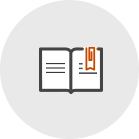요약문
Reclaimed land for agricultural use has been sold to numbers of farms on a small scale and cultivated for the rice. Recently, it has been suggested that reclaimed land be developed not only for agricultural use but for non-agricultural one. Reclaimed land is sublet to sell on a small scale when the land is used for the rice cultivation as well. However, it is important to use reclaimed land for the rice production to respond to rising prices in the international grain market and the global food crisis. Moreover, we need reclaimed land to improve our international competitiveness, particularly for the rice. Therefore, this study focused on the effective agricultural utilization of reclaimed land. The purpose of this study is to present an individual plan for 12 reclaimed land districts (54,000 ha) to explore in agricultural efficiently.
This study is structured as follows. In chapter 2, previous literatures are presented regarding the long term outlook farmland demands and supplies with investigating the agriculture environment. Also, we compare the demand for each industry with the supply by cities and provinces applying econometric specifications. Based on results, we suggest the appropriate process and method to evaluate the development program.
In Chapter 3, after establishing the goal, the vision, and promotion strategy, this study proposes a basic plan for agricultural land use. The first step is to select a kind of crops and set up the area to be cultivated. The second one is to arrange areas by usage. The third one is to prioritize the land usage and distribution in each reclaimed land district.
In Chapter 4, after reviewing technical possibilities, profitability, and public benefit of certain crops in reclaimed lands, we analyze a current situation and forecast it in terms of demand, supply, income, and export for facilities horticultural crops with prospective exports, facilities horticultural crops, food crops, forage crops, and bio-energy/landscape crops. We then set a target area for each crop that can be extended.
The chapter 5 classifies reclaimed land's usage by 8 complexes such as high tech exports facilities horticulture, general horticulture, eco-friendly forage/livestock, other supporting facilities, agricultural tourism, combined grains, ecological environment, and non-agriculture. Detailed arrangement for crop kinds and areas by each complex is shown in this chapter.
In Chapter 6, 11 case studies are displayed to highlight the concrete land use plan considering the location and agricultural status of each region. The selected regions are Hwaong, Sihwa, Sukmun, Ewon, Nampo, Samsan, Goheung, Gunnae, Bojeon and Youngsangang Ⅲ-1, 2.
Finally, the chapter 7 explains the systematic plan, the ordered process, the consistent management and organizations, and the lease plan for reclaimed land to emphasize the strategic drive mentioned in previous chapters.
저자에게 문의

저자소개
- 박석두
(Park, Seokdoo)
저자에게 문의

※ 퇴사하신 분이지만 아래의 내용을 입력해 주시면 관리자가 전달해드리겠습니다.
구매안내
KREI의 출판물은 판매 대행사 (정부간행물판매센터)와 아래 서점에서 구입 하실 수 있습니다.
판매대행사
- (주)정부간행물판매센터http://www.gpcbooks.co.kr사이트 바로가기
- 서울특별시 중구태평로 1가 25번지
- TEL 02) 394-0337, 734-6818
- FAX 02) 394-0339
판매서점


